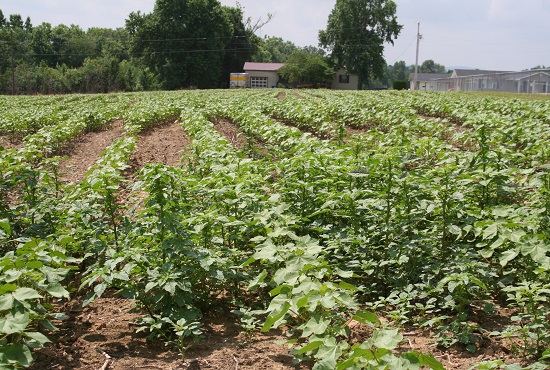Cotton Prices Trapped as Export Sales Continue with No Change in Demand
Low prices have encouraged export sales of all growths and U.S. cotton continues to move. Yet the level of sales is not sufficient to suggest that demand is improving. In fact, the level of sales does not even suggest any improvement in demand. Thus, cotton prices remain trapped within the narrow six cent, 77-83 cent trading range. The high 70s to low 80s trading range for both old crop and new crop will continue to prevail.
The U.S. Cotton Belt experienced pleasant weather all week, but parts of the vast Southern Plains still need timely moisture. Most of the region has adequate moisture for seed germination, which puts the area far ahead of the year ago pace that proved to be a disaster. Nevertheless, the entire region does need additional moisture for crop development after germination.
The good news is that the region is only just past the halfway point of its rainy season, so adequate time remains for additional moisture. Thus, as is the case every year, the Memorial Day weekend rains will be necessary, otherwise new crop prices will see a significant rally.
New crop price activity is dependent on weather conditions across the U.S. Cotton Belt, and especially on the moisture requirements of the High Plains and Rolling Plains of Texas, Oklahoma, and Kansas. Thus, the coming month will find December trading between 75 and 80 cents, but any forecast moisture – whether it materializes or not – will keep pressure on prices into the last week of May. However, once Memorial Day arrives, prices will strictly be in the hands of Mother Nature.
Weather activity during the month of July will provide the framework of price activity for the remainder of the 2024 growing season. The old crop July contract, now the spot month, should be expected to replace – exactly – the trading pattern of the now-expiring May futures contract. As commented, one should expect its trading range to be between 77 and 83 cents, with a tilt toward the lower end of the range. Should international conditions experience further deterioration, then the July contract could fall below the 77-cent level. There does not appear to be any scenario that could pull the July contract above 83 cents.
Weekly export sales totaled a net of 177,100 bales – a good week. China was the primary buyer, taking 95,200 bales.
Long ago I popularized the counting of countries in the market for U.S. cotton every week. I see others use that standard now. It can be a good, but quite simple price barometer, but not under present economic conditions. Typically, if sales were made to 17-18 countries, the market could experience some positive price movement. This week, sales were made to 17 countries. Prices were flat to down. Last week, sales were made to 22 countries. Price movement was flat to negative.
However, the 2023-24 export season has seen exceedingly small sales to countries other than China. Of course, Vietnam, Pakistan, Bangladesh, and Turkey have been steady customers. Yet, the sales to those great customers of U.S. cotton have been smaller than was historically typical.
Demand has simply not been good, and it remains “not good.” We can dress it up with all our ideas and superlatives, but demand is not good, and we cannot expect a price rally until demand surfaces (of course, a production disaster can boost prices, as we saw during the February-March period this year). Yet, as has been the case most of the season, most of the export sales have been made to China, generally for the Chinese reserve program and not for nearby mill use.
Absolutely yes, that is good for demand. However, the cotton is simply moving from a U.S. warehouse to a Chinese warehouse. It is not going to a spinning mill. It is not moving to a retail shelf. It is not available to the consumer. It simply remains as a bale of cotton stored in a warehouse. It is not demand, nor is it not demanded by the ultimate consumer. Thus, the sales are based on the potential for future demand and most definitely not for immediate demand.
Consequently, one should not expect a market price reaction to the Chinese sales. The 50,000 -100,000 bale weekly sales have been expected. The Chinese told the market they would rebuild their reserve stocks, and, at 75 to 85/90 cents, cotton is a “steal” for the world’s largest textile industry – although an industry that is currently operating with one hand tied behind its back.
The market will react to yarn sales and garment sales, the ultimate demand factor for cotton – not raw cotton sales.
The cotton on-call statistics continue to suggest that a price rally is doubtful. The July on-call sales to purchases, in terms of raw numbers, looks positive for prices. Yet, the ratio is only about 4 to 1, not typically friendly. The ratio is less positive this week than last, and prices are lower. Mills have more than ample time to fix prices and have been extremely aggressive the past two weeks. Thus, one should not expect that fundamental to move the market.
While I am not fond of repeating comments of the prior week, last week’s closing comment remains. Let us hope I just missed it.
“It was thought the July contract could challenge the 86 -87 cent level again. The 84-cent level will likely hold any price advance. The mid to high 70s appears to be the expected trading range.”
Give a gift of cotton today.








